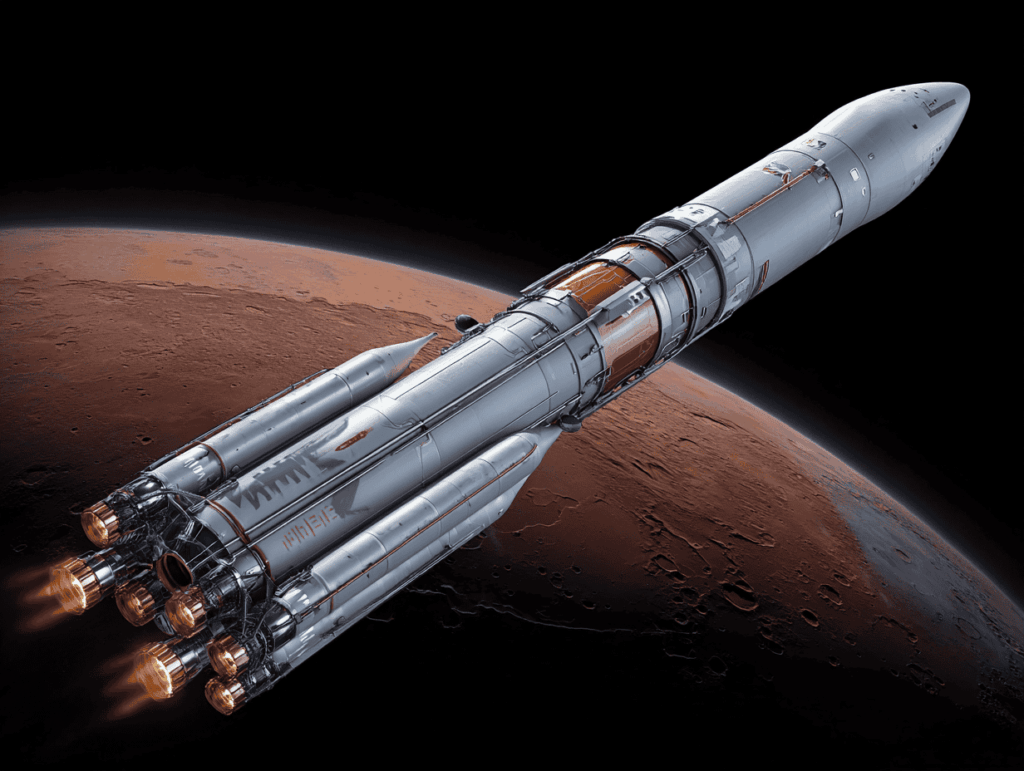
If humanity is to transform the dream of reaching Mars into a reality, a revolutionary new type of rocket may be the key. Engineers at Ohio State University and the University of Alabama in Huntsville are exploring a bold, potentially game-changing fuel: molten uranium. Their prototype, known as the centrifugal nuclear thermal rocket (CNTR), could significantly reduce the travel time to the Red Planet.
The CNTR departs from traditional chemical combustion and even the solid nuclear fuels tested in the 1960s. Instead, it utilizes spinning cylinders of liquid uranium at thousands of revolutions per minute. This centrifugal force keeps the uranium in place while hydrogen propellant bubbles through it, heating up until it is expelled at high speeds. Spencer Christian, a PhD student leading the prototype’s development at Ohio State, explained, “You could have a safe one-way trip to Mars in six months, for example, as opposed to doing the same mission in a year.”
A Nuclear Detour from Chemical Rockets
Chemical rockets, the mainstay of space exploration, are nearing their limits. They can achieve about 450 seconds of specific impulse, a measure of thrust efficiency, which suffices for lunar missions or satellite adjustments. However, for journeys to Mars or Pluto, these rockets entail lengthy missions. For instance, the New Horizons probe took nine years to reach Pluto.
Nuclear thermal propulsion, which heats propellant using reactors, has long promised to double this efficiency. The CNTR aims to surpass this, potentially achieving 1,500–1,800 seconds of specific impulse. According to a paper published in Acta Astronautica, this advancement could reduce a round trip to Mars from nearly two years to approximately 420 days. Dean Wang, associate professor of mechanical and aerospace engineering at Ohio State, emphasized the importance, stating, “The longer you are in space, the more susceptible you are to all types of health risks. So, if we can make that any shorter, it’d be very beneficial.”
The Hard Problems Hiding Inside
Despite its promise, harnessing molten uranium in a spinning rocket engine presents significant challenges. The study identifies ten major engineering hurdles, including:
- Designing porous cylinder walls that allow hydrogen in while preventing uranium leakage.
- Preventing uranium vapor from saturating the exhaust, which could impair efficiency.
- Managing the engine during startup and shutdown, when instabilities are most likely.
One experiment, whimsically named BLENDER II, spins a simulant liquid metal at high speeds to study gas bubble behavior in extreme conditions. Meanwhile, other researchers are investigating dielectrophoresis, which uses electric fields to extract stray uranium atoms from the hydrogen stream before they are expelled into space. As the paper notes,
“one or more fuel-loss mitigation techniques are required for a viable engine.”
Currently, the best-case scenario for engine lifetime is about 10 hours of total burn time, far short of what is needed for interplanetary travel. However, the potential remains significant.
Why This Matters
NASA and DARPA are already investing in nuclear thermal propulsion through the DRACO program, which plans to conduct a test flight by 2027. This project builds on decades-old designs using solid fuel, while the CNTR represents a more ambitious, riskier venture with molten cores and higher temperatures, but potentially greater performance gains.
If successful, the benefits would be substantial. Faster trips would reduce astronauts’ exposure to radiation and microgravity, and enable direct trajectories to outer planets, bypassing the lengthy detours of gravity-assist flybys. Imagine a spacecraft reaching Neptune in seven years instead of fifteen.
However, even the CNTR’s creators approach the project with caution. Wang noted, “We have a very good understanding of the physics of our design, but there are still technical challenges that we need to overcome.” In other words, molten-uranium spaceships are not expected to emerge from the hangar soon. Nonetheless, each step brings us closer to rockets that could make interplanetary travel feel less like an odyssey and more like a manageable long-distance commute.
The dream is ambitious, the challenges are formidable, but the physics is tantalizingly real. In the realm of space exploration, such conditions often precede revolutionary breakthroughs.






